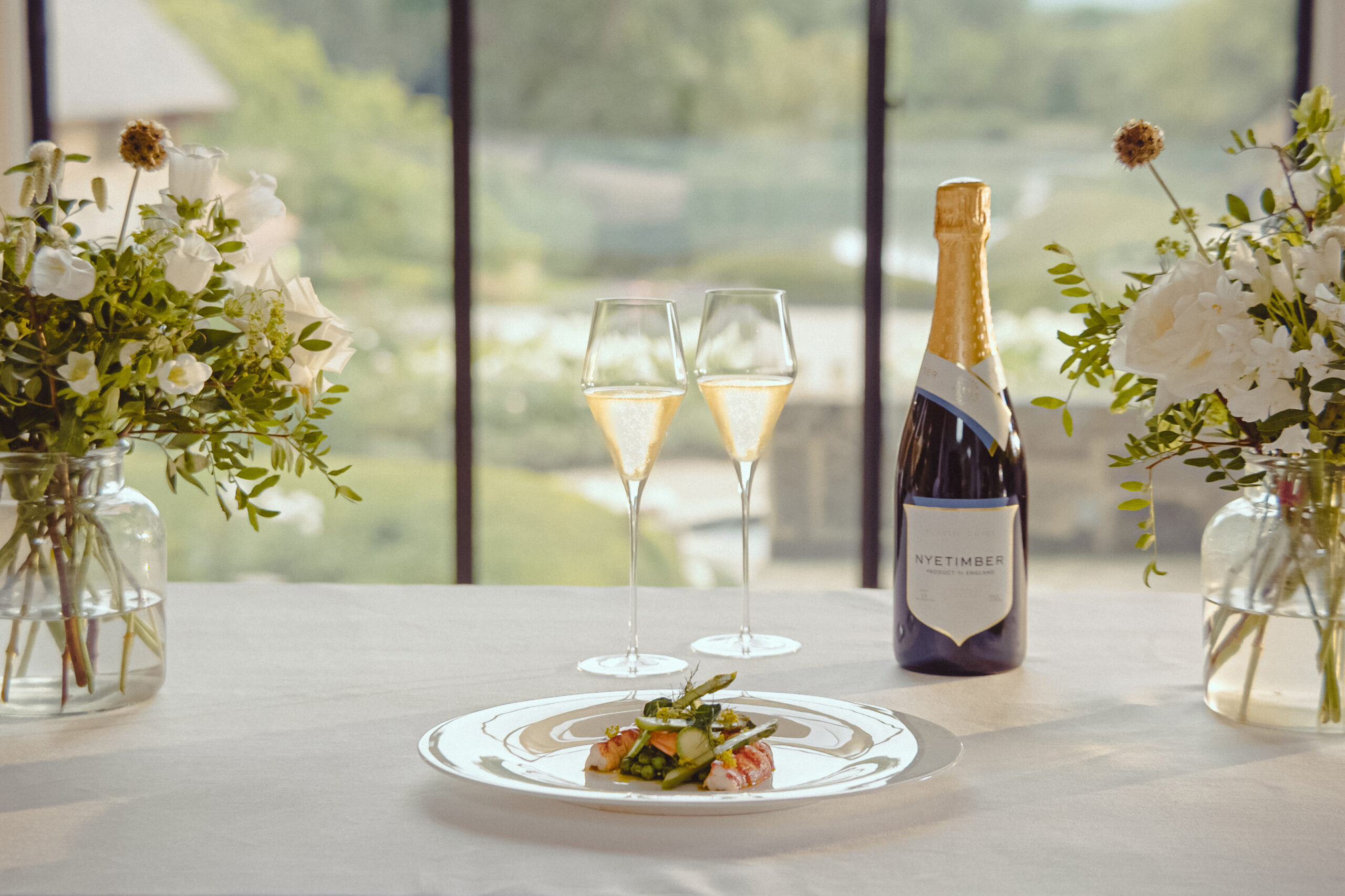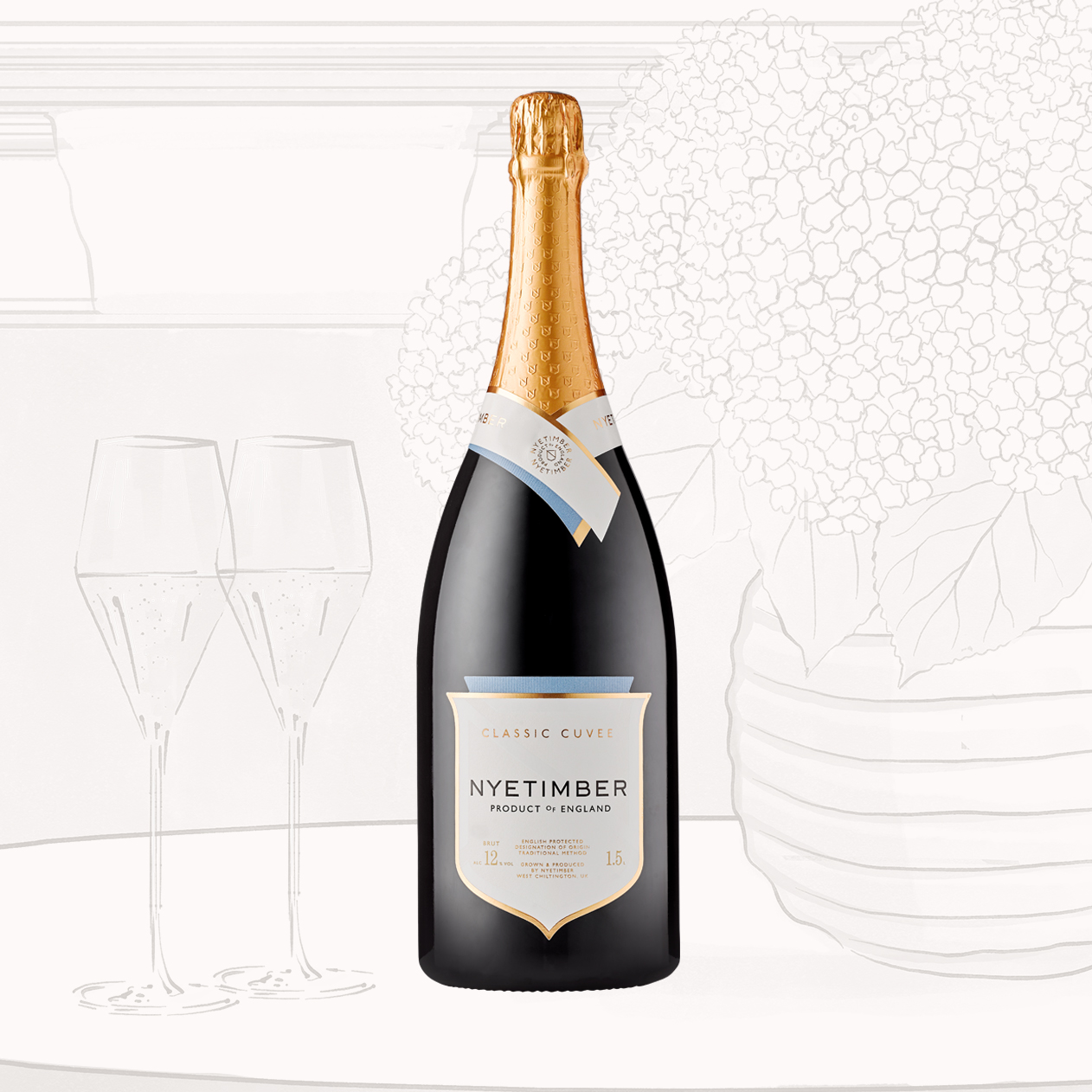- Shop
- WINES
- DISCOVER OUR WINES
- Classic Cuvee
![CCMV_nav]()
OUR FLAGSHIP CUVEE
- Rosé
![Rose_nav]()
DISCOVER OUR PASSION FOR SPARKLING ROSE
- Cuvee Chérie
![Demisec_nav]()
A REFINED SPARKLING WINE FOR FLAVOURSOME FOOD
- Blanc de Blancs
![bb16_nav]()
AN ELEGANT WINE OF COMPLEXITY AND DELICACY
- Tillington Single Vineyard
![Tillington_nav]()
A TRUE EXPRESSION OF PLACE
- 1086 by Nyetimber
![Nyetimber-1086-White-Menu-Image]()
THE PINNACLE OF OUR WINEMAKING
- 1086 by Nyetimber Rosé
![PCR_nav]()
MADE TO EXACTING STANDARDS FROM ONLY THE FINEST FRUIT
- 1086
- 1086
- 1086 Story
![1086 Story]()
The 1086 Story
- Expressions
![1086 Wine Expressions]()
1086 Wine Expressions
- Shop 1086
- Experiences
- Experiences
- Open Day Tours 2025
- 1086 By Nyetimber Paired Dining Experience
- Nyetimber Events
![Badminton Horse Trials]()
UPCOMING EVENTS, DINNERS & TERRACES
- The Nyetimber Bus
- OUR STORY
- THE COMPANY
- Our story
![Nyetimber-Menu-Our-Story]()
NYETIMBER: WORLD-RENOWNED
ENGLISH SPARKLING WINE - Environment
![Nyetimber-Menu-Environment]()
WE’RE COMMITTED TO A SUSTAINABLE AND HOLISTIC APPROACH TO OUR LAND
- Supporting The Community
![SDNPT]()
SUPPORTING CHARITIES WITH A YEAR-ROUND PROGRAMME OF FUNDRAISING
- Employees
![Nyetimber_OurStory_Employees]()
A PIONEERING SPIRIT, INNOVATIVE APPROACH AND ATTENTION TO DETAIL ARE THE CORNERSTONES OF OUR BRAND
- Awards
![Nyetimber-Menu-Awards]()
CLASSIC CUVEE MULTI-VINTAGE WAS AWARDED A GOLD MEDAL
- Weddings
- Weddings
- Wedding Packages
![Nyetimber_Wedding_Wine_Offerings_5]()
Wedding Packages
- Wedding Experiences
![Nyetimber_Wedding_Wine_Experiences_1-scaled]()
Wedding Experiences
- Personalisation & Gifting
![Nyetimber_Wedding_Wine_Gifts-scaled]()
Wedding Gifts
- Wedding Wines
![Nyetimber_Wedding_Wine_Pairings_1ab]()
Wines & Pairings
- Journal








































